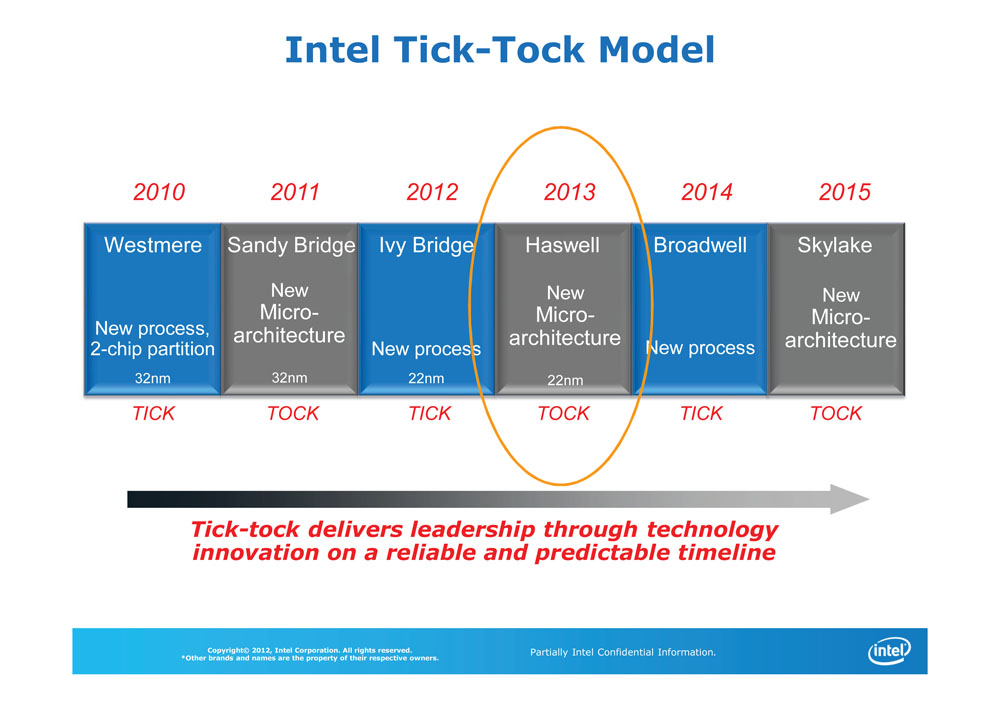If you are a SQL Server on-premises customer, there is an increasing amount of evidence that the year 2015 may be an excellent year to plan and possibly implement a complete data platform upgrade, which would include new server hardware, a new version of Windows Server, and a new version of SQL Server.
Microsoft has been pretty transparent about their plans for "Windows 10." The current public speculation is that it will be GA sometime in mid-2015. Microsoft has not been nearly as forthcoming about SQL Server vNext, but they did drop a few hints about some of the new features in vNext during some presentations at the recent PASS 2014 Summit in Seattle. I have no "inside information" about the projected release schedule for SQL Server vNext, but it seems likely that it very well might show up sometime in late 2015 or early 2016.
As far as new server hardware goes, Intel has a whole slate of new server processor families that are scheduled for release during 2015. Some of these processors will work in existing model servers, while some will require new server models, since the processors will use new processor sockets compared to previous models. Here is a brief summary of the relevant server processor families:
Intel Xeon E5-4600 v3 "Haswell-EP" Q2 2015
This processor family is the four-socket capable variation of the 22nm Intel Xeon E5-2600 v3 "Haswell-EP" that was released in Q3 of 2014. Unfortunately, earlier four-socket versions of this family, such as the 32nm Intel Xeon E5-4600 "Sandy Bridge-EP" (Q2 2012) and the 22nm Intel Xeon E5-4600 v2 "Ivy Bridge-EP" (Q1 2014) have not done particularly well on TPC-E benchmarks compared to the two-socket versions. According to some recent leaked specifications, these upcoming processors will have anywhere from ten to eighteen physical cores and from 25 MB to 45 MB of shared L3 cache.
These processors are not electrically or physically compatible with their recent predecessors, so they are going to require new server models from the server vendors. For example, Dell currently has the Dell PowerEdge R820 that can use the E5-4600 or E5-4600 v2 processors. They will probably have a new PowerEdge R830 model server for the E5-4600 v3 family.
Frankly, if I was in the market for a new four-socket server in mid-to-late 2015, I would be much more interested in the 22nm Intel Xeon E7-4800 v3 "Haswell-EX" that is due for release at about the same time. It will have much higher memory capacity, and will probably scale much better in a four-socket server.
Intel Xeon E7-4800 v3 "Haswell-EX" Q2 2015
This processor family will include the 22nm four-socket Intel Xeon E7-4800 v3 and the 22nm eight-socket Intel Xeon E7-8800 v3 series. Early reports indicate that there will not be a two-socket E7-2800 v3 series. Even though the E7-8800 v3 series is designed for eight-socket (and higher) servers, it is actually possible to use this processor in a four-socket server. The reason why you might want to do this is because of how Intel chooses to vary the specifications for the four and eight-socket versions of this processor. Current information is that these processors will have up to eighteen physical cores, up to 45 MB of shared L3 cache, and will support DDR4 memory.
These processors are also not electrically or physically compatible with their recent predecessors, so they are going to require new server models from the server vendors. For example, Dell currently has the Dell PowerEdge R920 that can use the previous 22nm Intel Xeon E7-4800 v2 "Westmere-EX" (Q1 2014) processors. This will presumably be replaced with a new PowerEdge R930 model server for the E7-4800 v3 family.
This processor family is going to be the one you will want for your larger on-premises SQL Server workloads. As always, you should not just pick the model with the highest core count because of how SQL Server licensing works. You need to do some analysis, and put some thought into which processor model you choose from this family.
Intel Xeon E3-1200 v4 "Broadwell" Q3 2015
The 14nm Broadwell is an Intel Tick release that builds on the current 22nm Haswell microarchitecture using a 14nm manufacturing process technology. The 14nm Intel Xeon E3-1200 v4 line is meant for single-socket servers and workstations, which is essentially a server version of the upcoming 14nm Intel Core i7 Broadwell mainstream desktop processor. Since this is a Tick release, these processors will be electrically and physically compatible with the previous 22nm Intel Xeon E3-1200 v3 "Haswell", (Q2 2013) processors, so existing model servers will be able to use this new processor.for both
This reason why you might care about this processor family is that it is rumored to have support for 64 GB of DDR4 RAM in an extremely fast, single-socket server. This might be ideal for a relatively smaller SQL Server OLTP workload that requires the absolute best single-threaded processor performance possible.
Intel Xeon E5-2600 v4 "Broadwell-EP" Q4 2015
This will be the two-socket version of Broadwell, called Broadwell-EP. Since this is also a Tick release, these processors will be electrically and physically compatible with the previous 22nm Intel Xeon E5-2600 v3 "Haswell-EP" (Q2 2013), so existing model servers (such as the Dell PowerEdge R730) will be able to use this processor.
As soon as this processor is available, it will be what you want to pick for a new two-socket server. Reportedly, Intel has had some early yield problems with 14nm manufacturing, which they have supposedly resolved. I would not be surprised to see Intel delay the release of this processor by a quarter, not due to any technical issues, but simply because they don’t have any viable competition from AMD anymore.
Intel Xeon E3-1200 v5 "Skylake" Q4 2015
Skylake will be an Intel Tock release, that will use the 14nm manufacturing process. I seriously doubt that Intel will actually release this processor family so close on the heels of the Broadwell. They have very little incentive to do this because of the lack of competition from AMD, and because it would disrupt their partner server vendors (since this processor will require new model servers and workstations). Despite this, the current public information and rumors indicate that the E3-1200 v5 is due in late 2015.
Figure 1 shows the most current picture of the Intel Tick-Tock Model that I could find. The dates at the top coincide with when the mobile versions of these Tick-Tock releases were due to be released. Intel has a pattern of releasing new processor models in the mobile space first, followed by the desktop and single-socket server space next, and then followed by the two-socket server space, finally followed by the four-socket and above space.
 Figure 1: Intel Tick-Tock Model
Figure 1: Intel Tick-Tock Model
Paying close attention to how the release schedules for Windows Server vNext, SQL Server vNext, and the different Intel server processor families may align over the next 12-18 months will help you make a more intelligent decision on when to plan and push to upgrade your entire on-premises data platform to these new versions. Making the right choices about timing will let you take advantage of the new features and improved performance and scalability in each layer of the data platform stack.








1 thought on “SQL Server Data Platform Upgrade in 2015”
Comments are closed.